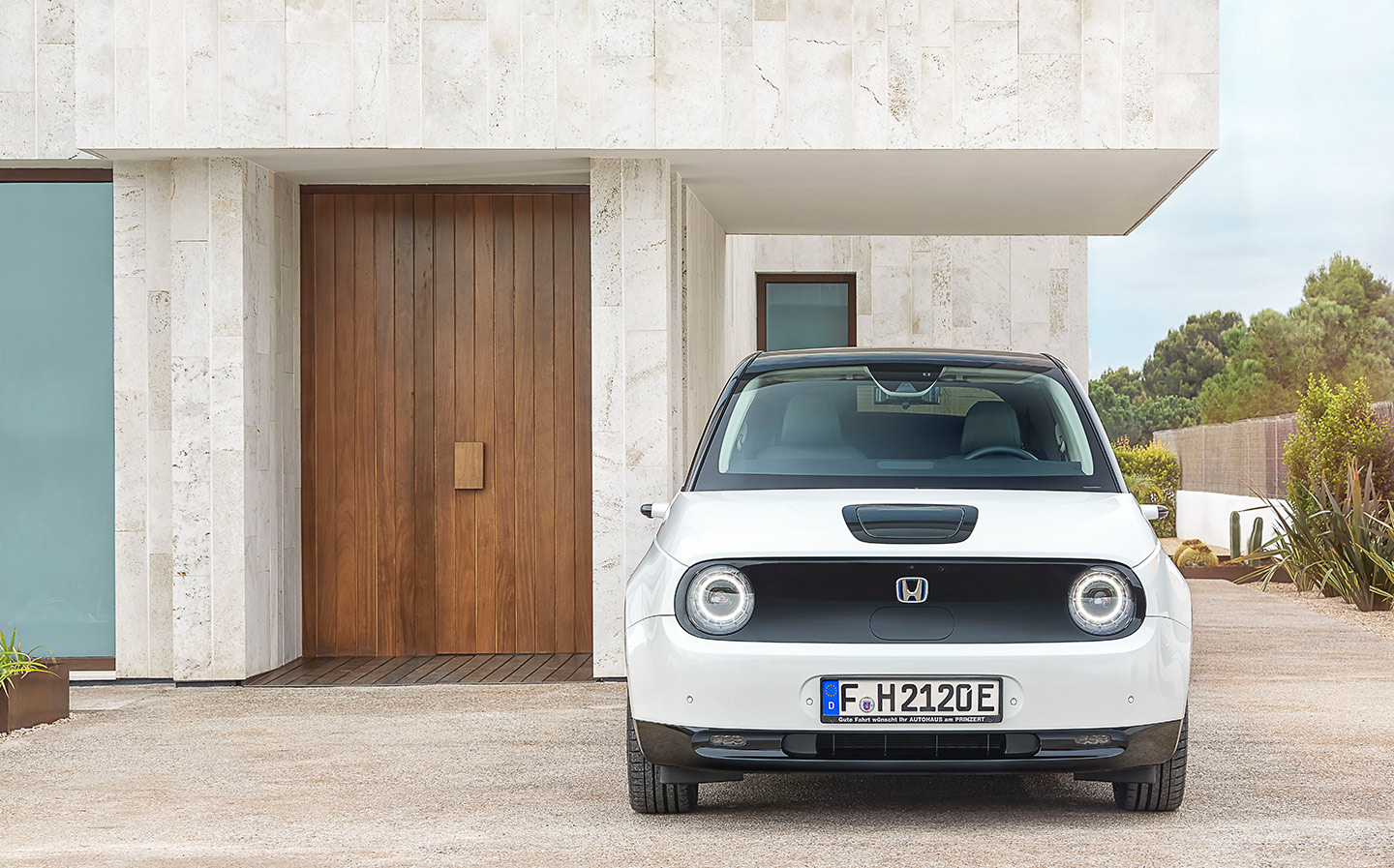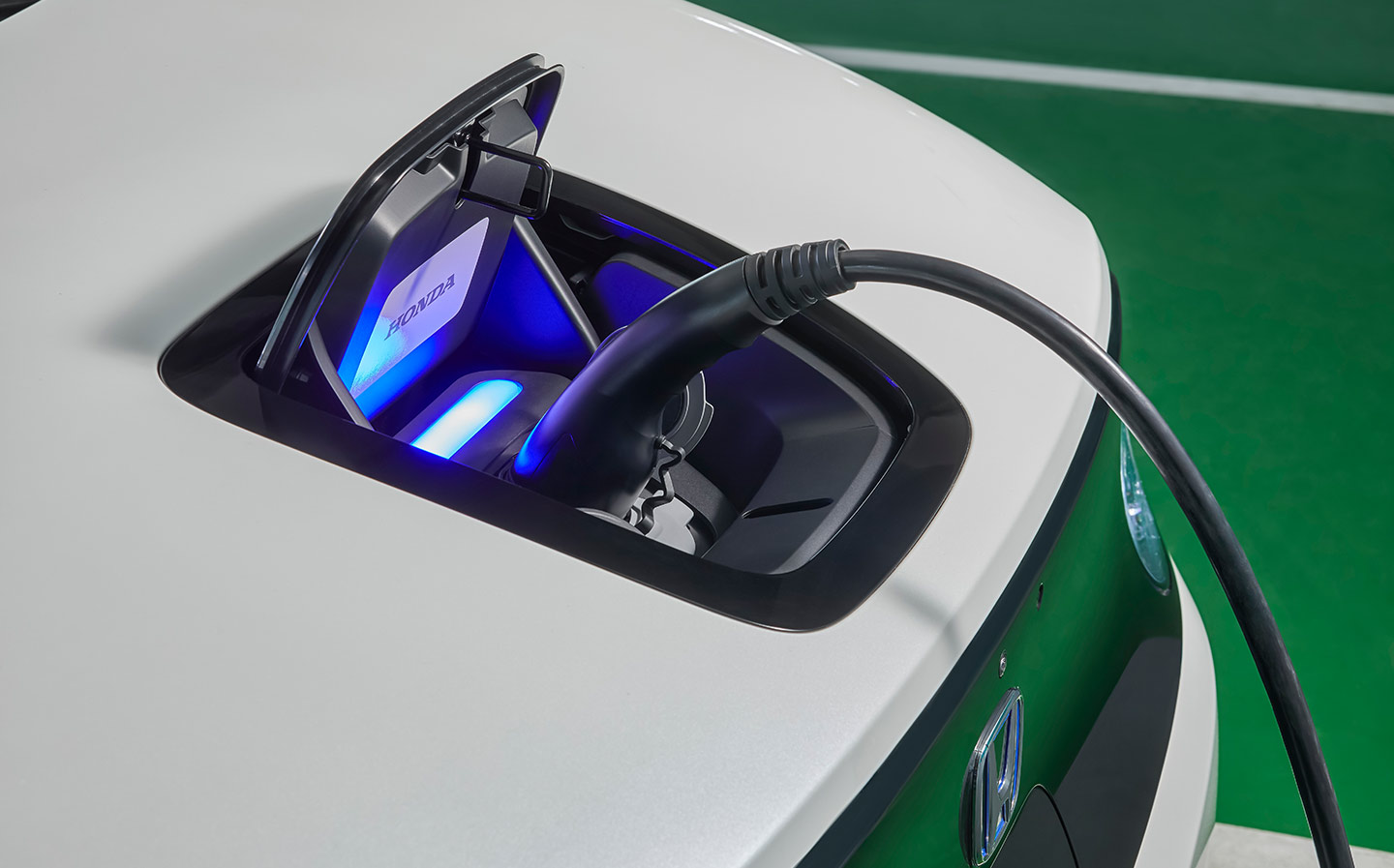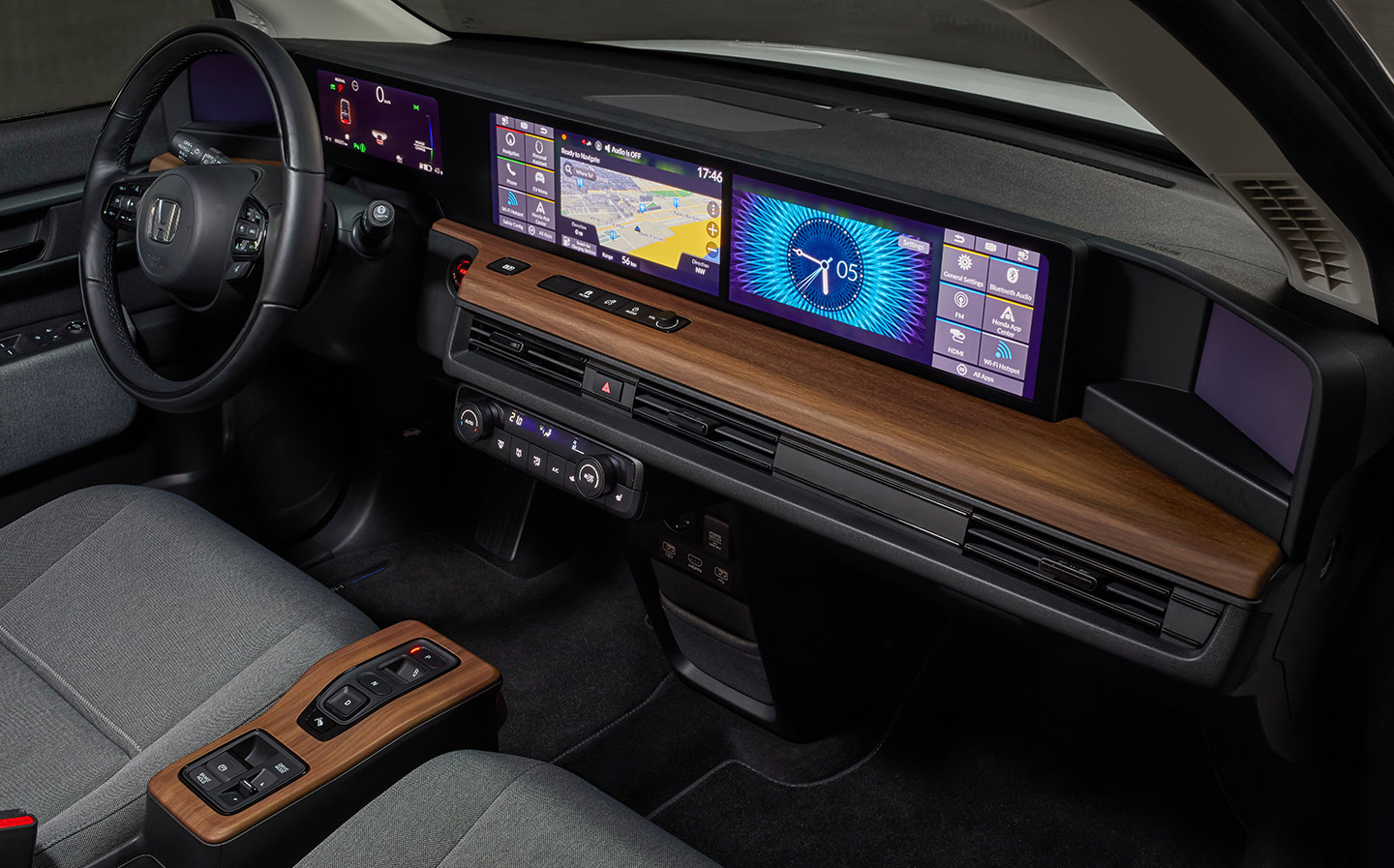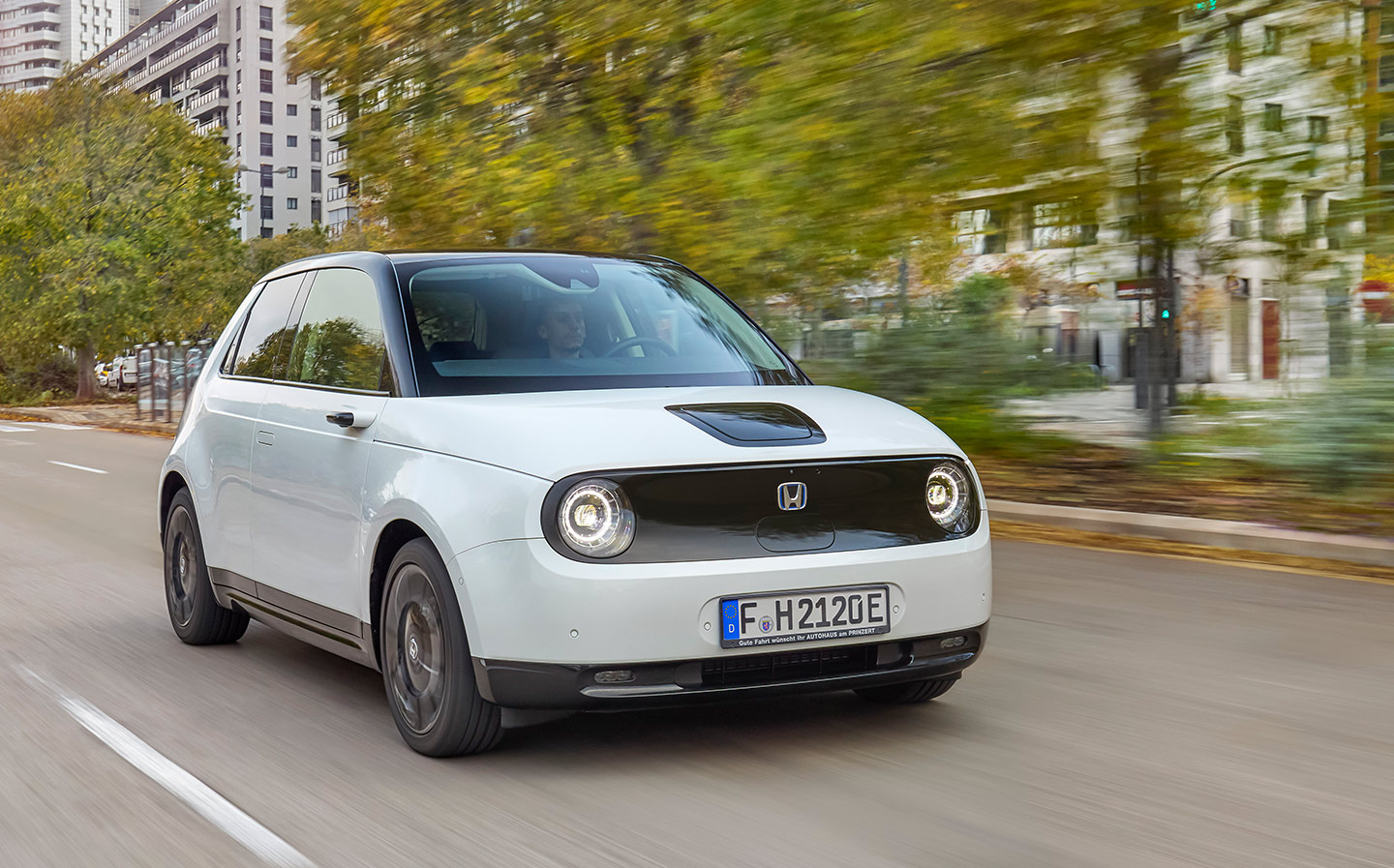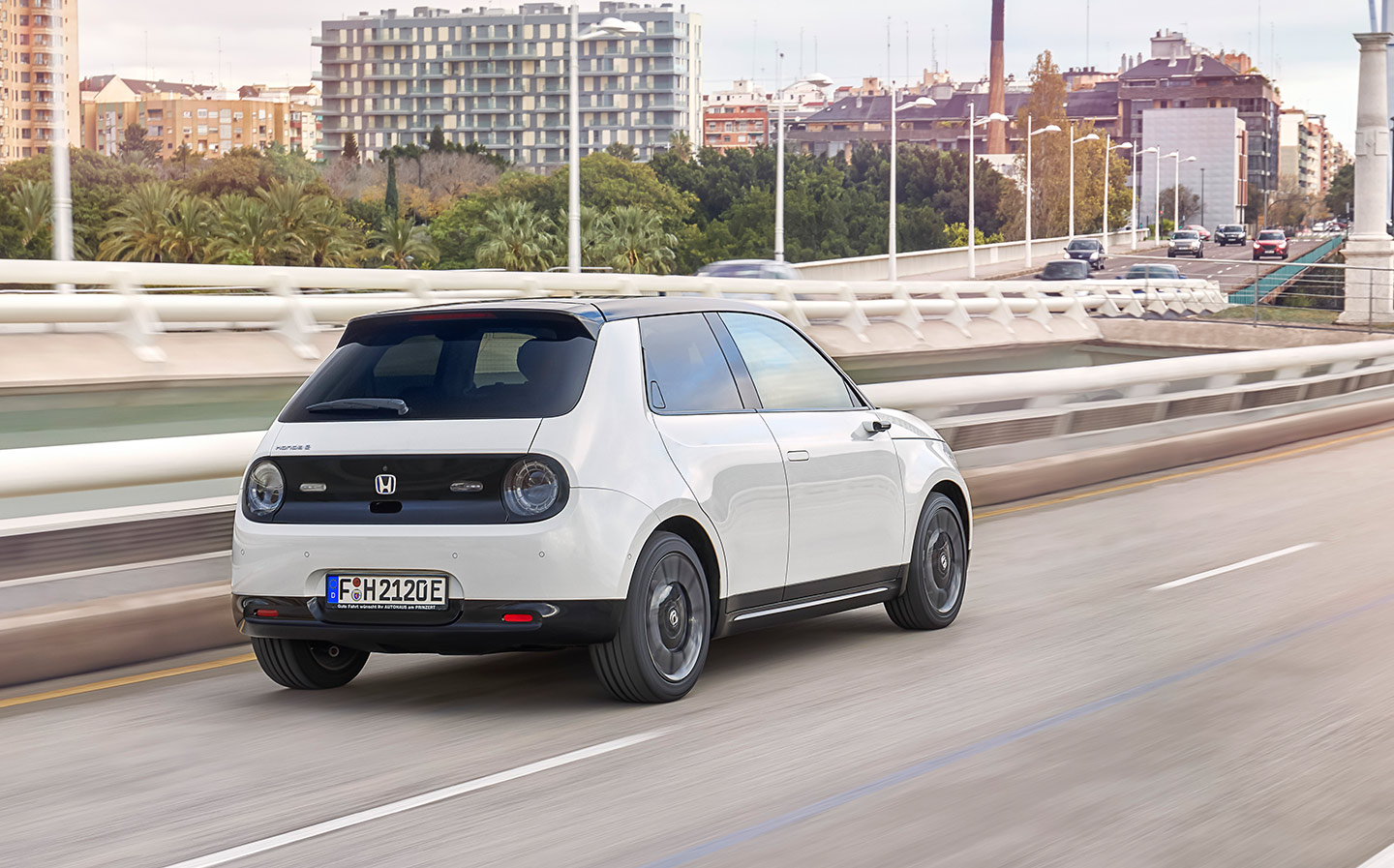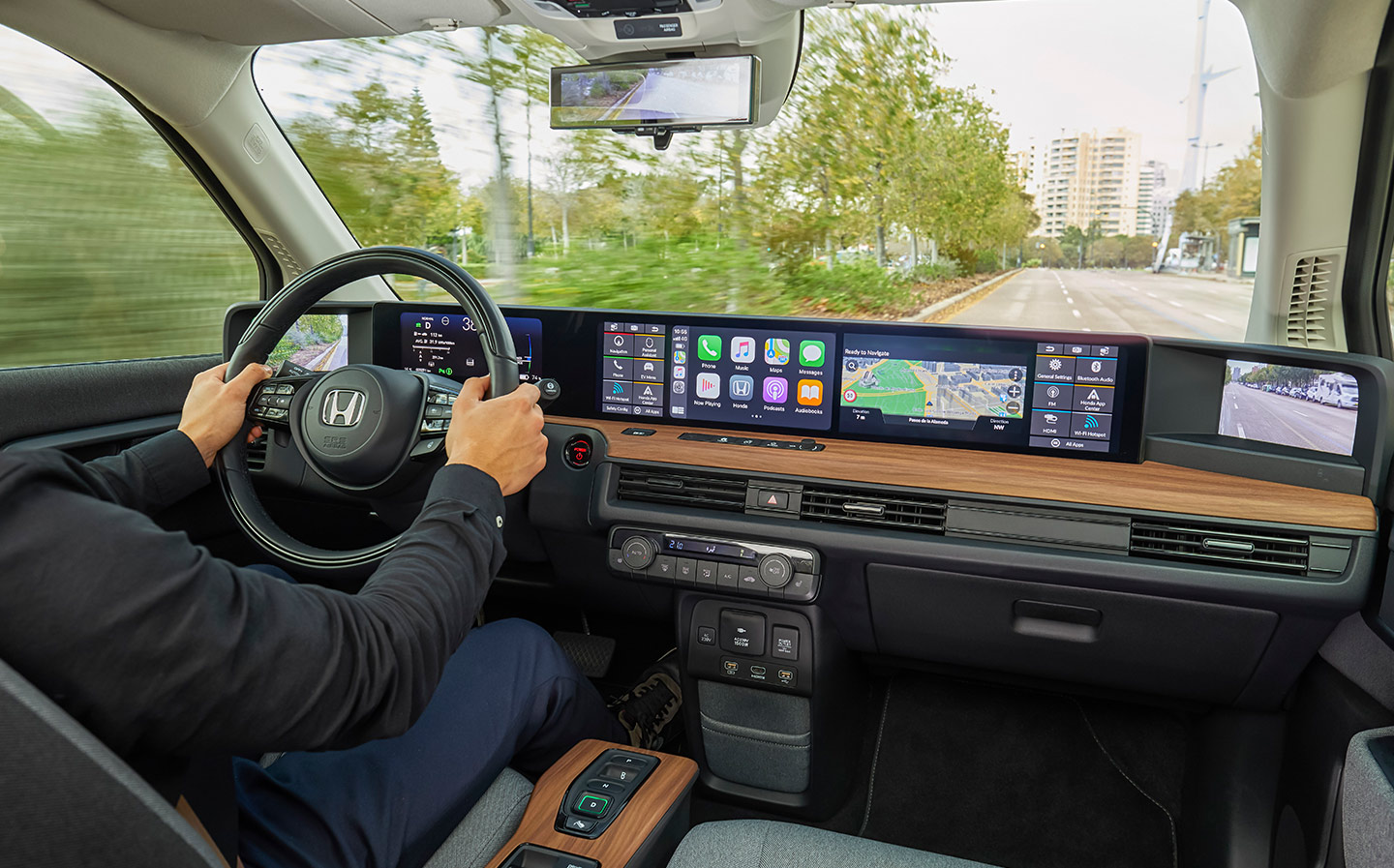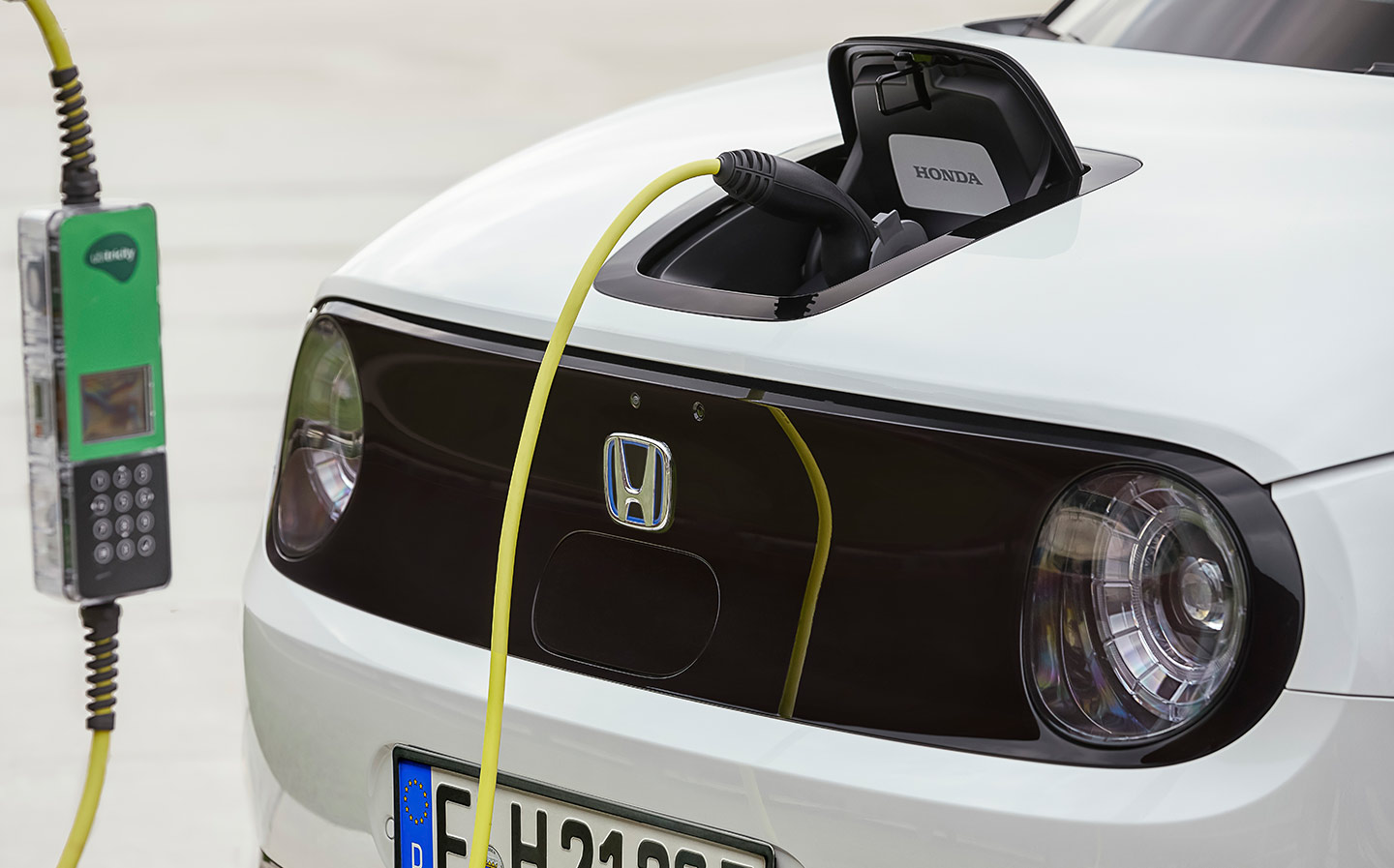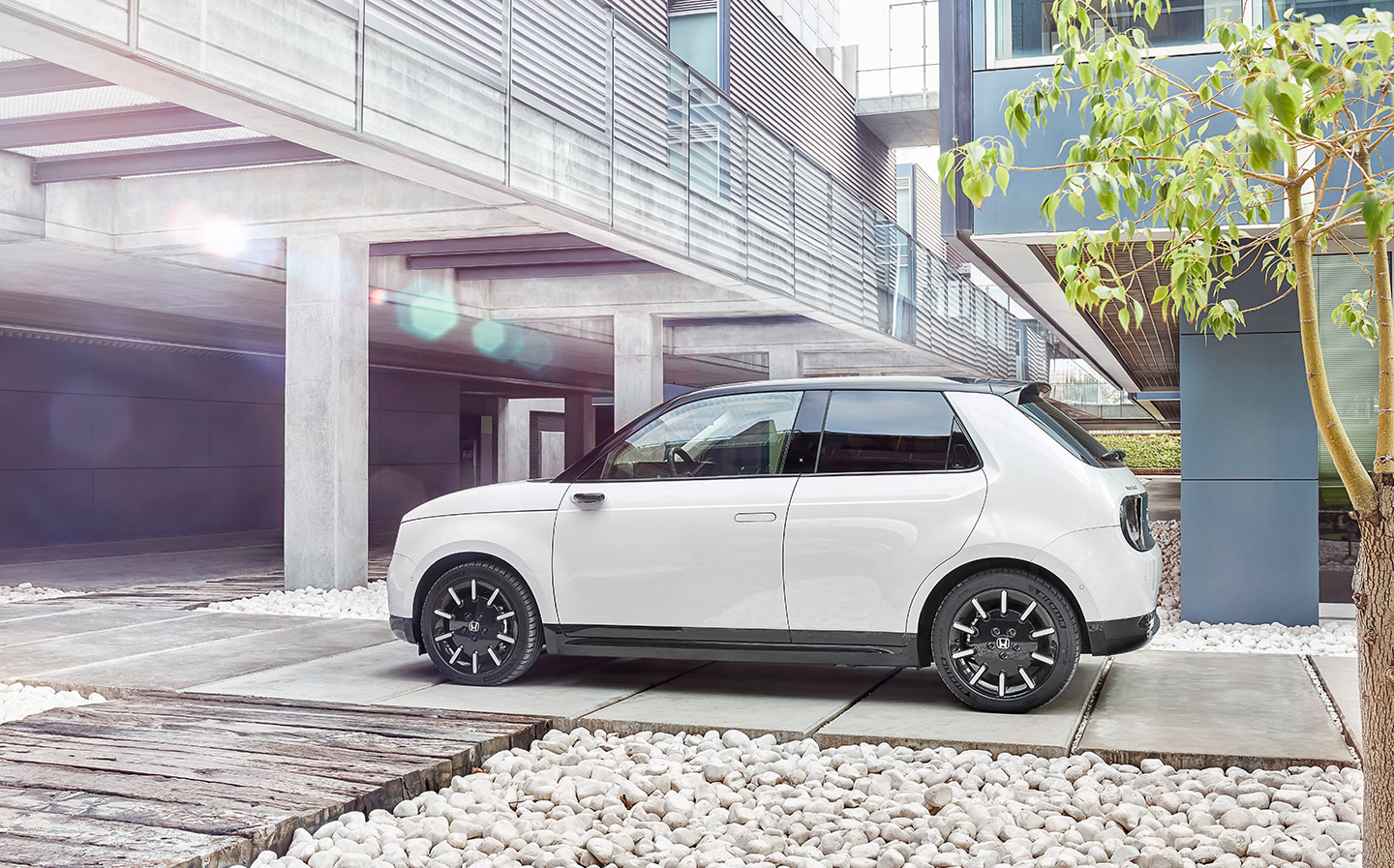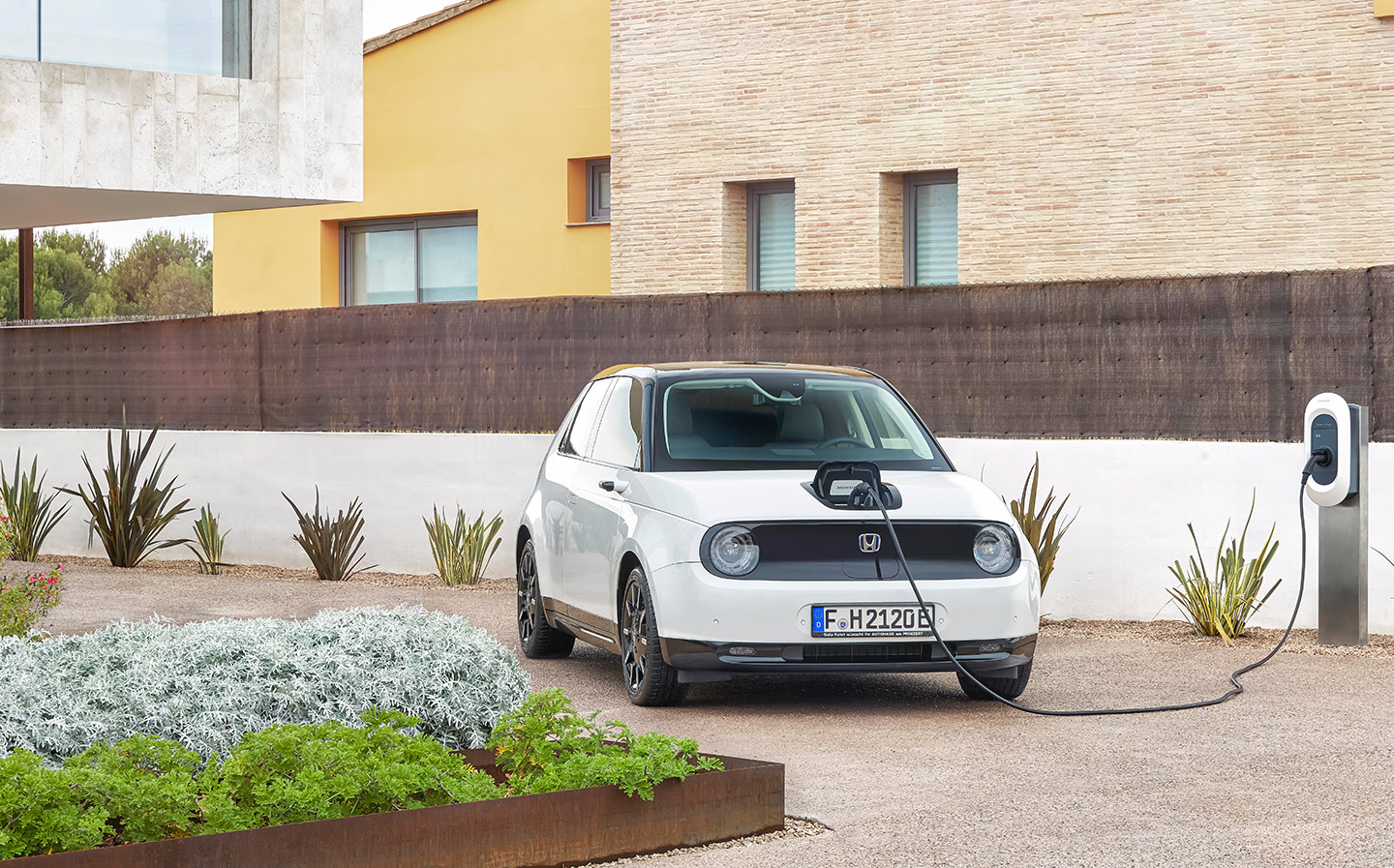2020 Honda e review
Sorted for Es and Whizz?
THERE’S a fundamental problem with the notion that electric cars are ideal for cities. In urban areas, most people live in flats, and if a city-dweller does own a house, it’s unlikely to have off-street parking. That means that until public charging points are available at regular intervals along every kerbside, recharging is an issue, which is seriously off-putting for any driver thinking of taking the plunge into electric cars.
In fact, owning a plug-in car is much more appropriate for those who live just outside cities and towns, in the suburbs. There, they’re much more likely to have a driveway and be able to install a home charger, allowing convenient top-ups of the battery overnight.
Given all that, launching an electric city car right now doesn’t seem to make sound business sense. They’re small, which limits the size of battery that can be included, and that in turn limits how far they can go between charges. And if you ask most ordinary drivers what is holding them back from buying electric right now, it’s range.
At a dinner party recently a chap told me he is looking forward to buying an electric car, but for him it will have to be able to go at least 300 miles per charge (those cars are slowly arriving).
This is why Elon Musk, founder of Tesla, hasn’t rushed to introduce an electric city car, instead focusing on large, expensive, high-mileage models. And it’s why we don’t see electric Smart Fortwos (which have been on sale for about 10 years) filling up city streets, despite the best efforts of Smart’s owner, Mercedes.
And other big brands are joining the game with small electric models this year, notably Mini, with the Mini Electric, and Honda, with the car you see here: the “e”. The Japanese car maker’s first pure-electric production car is not only compact in name but also size (it’s 10cm shorter than the Jazz) and range, with a 35.5kWh battery that is good for 127 or 136 miles, depending on whether you go for the 16in or 17in wheels.
Honda is a little late to the pure-electric party. Until very recently it was convinced that hybrids are the only real solution until hydrogen fuel cell vehicles take off. Pure-electric (or battery electric) cars didn’t appear to be part of its plans even four years ago.
Indeed, Honda’s new “2030 Vision” strategy will see a number of new hybrids arriving, with the Jazz Hybrid joining the CR-V Hybrid this year and three more petrol-electric models due globally by the end of 2022. In fact, Europe’s tough emissions regulations mean that plan is to be implemented faster in the EU, with “all mainstream models” gaining a hybrid option over the next two years.
But alongside those will be two pure-electric models, starting with the Honda e. A cynic might argue it exists by mistake, after Honda showed off a cutesy little concept called the Urban EV at the 2017 Frankfurt Motor Show. No doubt to Honda’s amazement, those who saw it wet their knickers and declared, “Take my money!”
As a result, Honda went to great lengths to convince us that the e is the ideal first foray into pure-electric motoring. Not many car makers these days trot out the line to journalists that the average daily distance driven by a European motorist is 18 miles, so 100+miles is more than enough. This was so often quoted when the original Nissan Leaf, which could travel less than 100 miles per charge, was launched 10 years ago, but as many new EVs are 200+ miles, we don’t hear it so much.
Even the standard Leaf now travels nearly 170 miles per charge, and there’s a range-topping model with a 239-mile range, which suggests Nissan underestimated buyers’ wants, if not their needs. As another motoring journalist, paraphrasing I know not who, pointed out: most people don’t drive 300 miles in one go, but show me a driver who never does. Which means almost everyone will want more than 136 miles per charge. Either that, or a second car with petrol or diesel power.
Quite rightly, Honda pointed out that smaller batteries mean using fewer precious resources and reduced cost on the forecourt, though you couldn’t call the e cheap: it starts at £26,160 and rises to £28,660. For the same money you could buy a Renault Zoe, which is slightly bigger and has a range of up to 245 miles.
Fortunately, the Honda e does impress in other areas. The production version of the Urban EV is less muscular and more cutesy than the concept, which had outsized white alloys and a squarer body that made it look like the lovechild of a Mk I VW Golf and a Lancia Delta Integrale in oh, such a good way. The e is still a decent-looking car, though, and its less in-your-face styling may have wider appeal.
And Honda has been careful to consider the whole package, not just the engineering, which means attractive financing, lots of gadgets including a clever phone app that allows you to share a digital key with friends and family members, and excellent charging technology.
The Honda e can be topped up with AC or DC current at up to 100kW using a CCS2 connector, which can fill the battery pack to 80% in 30 minutes. Honda’s bespoke home-charging wallbox operates at 6.6kW but that’s enough to completely fill an empty battery in 4.1 hours. Honda has even taken a major stake in a company that installs charging points in street lamps, which it hopes will help remove that city-charging stumbling block.
But the cleverest bit of the car has to be the striking technology in the cabin, specifically the five-screen digital dashboard. The driver’s display shows all the information you need clearly, though it’s the two 12.3in central touchscreens that steal the show, as they’re fully customisable (in the same way as a smartphone) colour HD displays, and you can easily switch between apps including radio, energy flow and mapping. You can even swap the positions of the screens at a touch, so if you’re running navigation on one and music on another, you can move the one you need closer. It’s sensible to send the music to your passenger to control, for example. Or bring it back to the driver’s side if they can’t be trusted with the tunes.
The sat nav is decent in layout, though many buyers will be comforted by the fact that Android Auto and Apple CarPlay come as standard on the Honda e, meaning you can run Waze or Google Maps.
The large displays also prove great for playing video, and the standard stereo system provides rich audio. It’s not hard to imagine owners flicking on a movie while the car is getting a rapid charge. As there’s an HDMI port and 230v power socket under the dash, you can even hook up a games console.
The lounge-style design of the cabin is glorious, the wood veneers and light-toned sofa-like cloth fabrics helping lift the general ambience, while the clean lines of the dashboard (which mirror the flush panels of the exterior) create a calming environment. Clearly Honda has taken a leaf out of Volvo’s book here. Even the switchgear feels of higher quality than you’ll find in any other Honda, including the more expensive models, and everything is laid-out superbly.
To help drivers navigate the digital menus, the Honda e is one of many new cars to introduce an AI-powered “virtual assistant”, allowing you to find radio stations, set destinations and control other systems by saying “OK, Honda”. The car maker says it adapts to individual voices over time, helping it deliver more accurate responses.
Sensibly, Honda has stopped short of obliterating almost all the physical buttons (as is the case in the new VW Golf), so, for example, you’ll still find a button for the self-parking system just to the right of the steering wheel, within easy reach. A system, by the way, that is a cut above most others out there and recognises spaces on both sides of the car, with the driver able to view them via a camera display on the touchscreen, then select one of them with a single tap. The car can then steer and drive itself into the space without you needing to touch the steering wheel, accelerator or brakes.
Still, when we tested it, it was slower to get you into a space than most competent humans would have been, so even with a system as good as this, you’d have to be pretty rubbish at parking to use it regularly.
The Honda e is amazingly manoeuvrable in car parks, though, thanks to a turning radius of just 4.3m. That gives it a London Taxi-type turning circle and means you can spin around in a street 8.6m wide.
Out on the road this translates to pretty sharp steering, and although the ratio is variable as speed increases, it still feels quite lively at the front end at 70mph. Heavy rain during our test drives made this slightly more exciting than one might want but when the road dried a little, combined with the direct throttle response, low centre of gravity (the battery is under the floor), independent suspension all-round and 50:50 weight distribution, it translated to a pretty engaging drive. Its sportiness is hampered to some degree by slightly softer-than-expected suspension, which no doubt will be another differentiation from the Mini, which traditionally have rock-hard rides.
Our test drives in Valencia coincided with a pretty serious storm, so on-the-limit handling was difficult to assess, though during the less biblical portions of the drive we did find the front end grip to be pretty exceptional, and the rear-driven wheels likewise never lost traction, even when giving it the full 152bhp (a 134bhp version is also available) and 232 lb ft of torque out of a corner.
In Normal mode the car is lithe and responsive to inputs but slip it into Sport mode and the full beans are very much apparent. The little Honda isn’t Tesla quick, of course, but it’s got more than enough grunt to impress, and can outgun most petrol cars. Put your foot down at 50mph and there’s still a good turn of speed, too, enabling quick, safe overtakes.
The heavy rain made a huge difference to the cabin noise. Hammered by droplets on Spanish highways the Honda e produced quite a din inside, but a moment of calm as we passed through a tunnel brought into sharp relief the calm that is possible. Later, less inclement weather confirmed the electric Honda is a relaxing, quiet place to be even at high speeds.
That’s helped by the fact that the wing mirrors have been replaced by cameras, as also found in the Audi e-tron electric SUV, which creates less drag (and therefore noise) through the air. The cameras feed video to a pair of 6in monitors just inside the doors, which remained clear throughout our drives, even in pouring rain. The rear view mirror can also act as a screen, with video coming from a camera mounted inside the rear window at the flick of a switch. That means rain or mist on the glass obscures the view out of the back; a problem from which the roof fin-mounted cameras on the latest Jaguar Land Rover vehicles don’t suffer.
There are other grumbles with the Honda e, too. During our test drive we only managed to get about 2.5 miles per kWh out of it, which is below what we’d expect from a car of this size. And although comfort for those in the front is very good, where even the tallest drivers will have no complaints, space in the rear seats is extremely limited, even in supermini terms. When a large (but not freakishly big) Honda employee climbed into the back to run us through a few features of the car, he resembled Rubeus Hagrid, the giant professor from Harry Potter, his head bent double against the roof and his knees up around the front seats. The boot, too, is small, though probably capacious enough for your quidditch gear.
On the face of it, the Honda e is a tremendously exciting car. It drives well, looks good, is the right size for guiding around tight city streets and the interior — particularly the infotainment system — has such a wow factor that many may want to throw cash at Honda for that alone. However, is it a lot of money for a car that can be driven 100 miles less per charge than the equivalently-priced and slightly larger Renault Zoe, and charging will be a problem for many city-dwellers, which is meant to be its natural home. All of which means the Honda e isn’t really a city car at all.
Fortunately, according to Honda UK’s marketing man, interest in electric vehicles in rural areas is unexpectedly high — people in the remote areas of Scotland and Cornwall are actually very keen on owning affordable EVs because refilling a petrol or diesel tank can mean a long drive to the petrol station. For these people, charging their car at home is an ideal solution.
Whether these rural folk will be happy with the Honda’s size, range and price remains to be seen, though, and it’ll be fascinating to see how well it sells in the first 12 months, especially against the Mini Electric. The good news for Honda is that they’re only expecting 2,000 registrations in the first year, so if it falls well below target it won’t prove catastrophic for the business. It would be a shame, though — there’s a lot to like about the Honda e.
Rivals: Honda e vs Mini Electric
| Honda e Advance | Mini Electric Level 3 | |
| Price (inc. £3,500 grant) | £28,660 | £30,400 |
| Power | 152bhp | 181bhp |
| Torque | 122 lb ft | 199 lb ft |
| 0-62mph | 8.3sec | 7.3sec |
| Driven wheels | Rear | Front |
| Range (WLTP) | 136 miles | 145 miles |
| Charger type(s) | CCS2 (AC & DC) | CCS2 (AC & DC) |
| Rapid charging time | 80% in 30min (100kW) | 80% in 36min (50kW) |
| Length | 3,894mm | 3,845mm |
| Width | 1,752mm | 1,727mm |
| Height | 1,512mm | 1,432mm |


